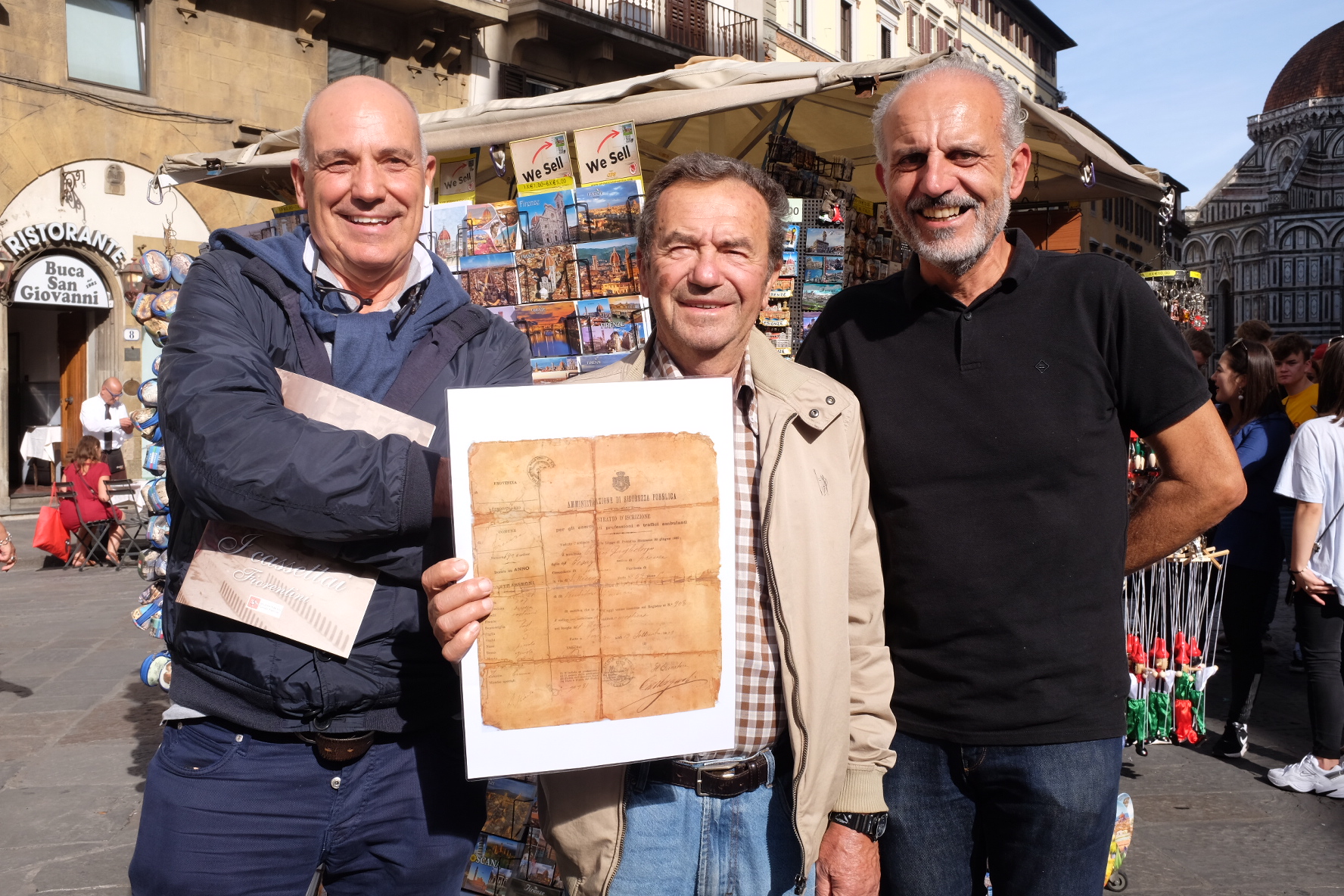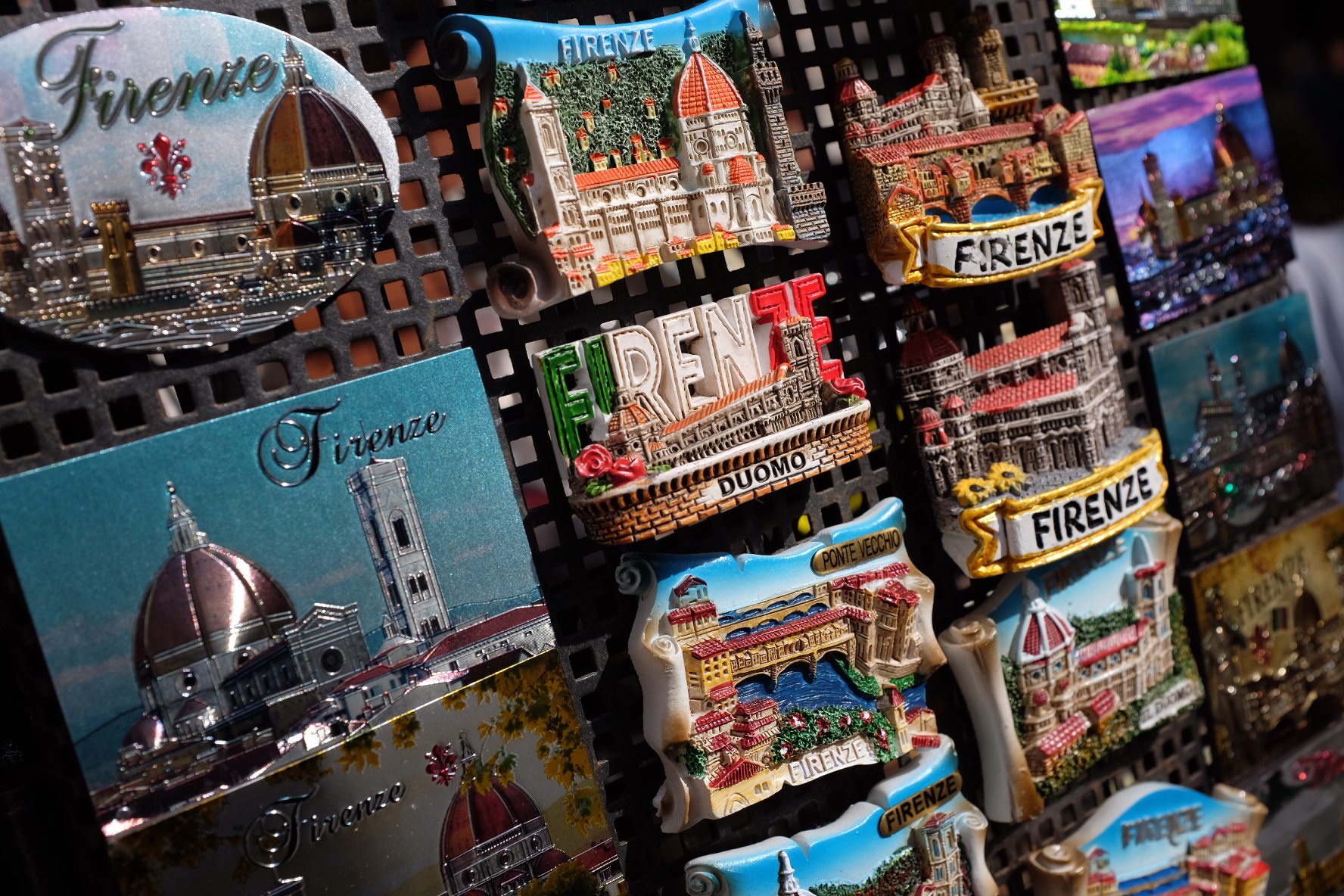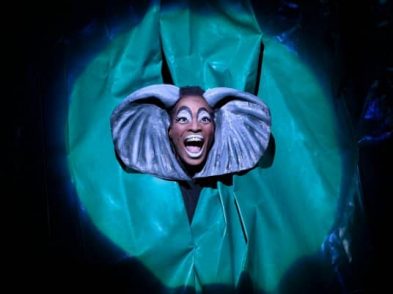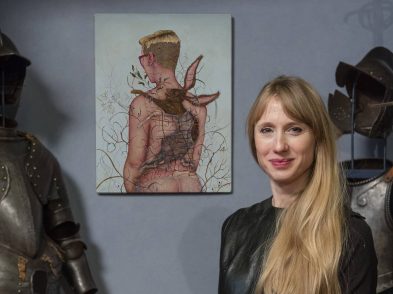They are in the city’s piazzas every day of the year, but you might have thought they were just ubiquitous tourist booths, selling the usual souvenirs. The Cassettai Storici Fiorentini represent a 110-year-long history of souvenir selling and watching out for visitors as they go about their sightseeing.
Mobile kiosks are taken down from a truck each morning and loaded back up each evening, unpacking and packing an irreplaceable breadth of knowledge about Florence. Upholding a tradition of street trade that dates back three generations, The Florentine found out more about these 14 operators in 14 locations.
The Cassettai took to the streets in 1909 when an influx of mainly British tourists arrived in the city as part of the Grand Tour. The idea was to sell laporelli (postcards) in piazza San Giovanni, between the cathedral and the baptistery. Other mementos were added subsequently, including accordion-style booklets with photos of Florence (albumini), city guides, reproductions of monuments, palazzi and churches (bronzini), as well as pendants, brooches and bracelets in brass with coloured glass to imitate Byzantine mosaics. Box-shaped containers, known as cassette, were used as a way of displaying goods in the historic squares; it was from these boxes that the vendors took their name. The cases sought inspiration from those used by 19th- and 20th-century shawl sellers, who donned several shelves attached to a shoulder strap. This method of displaying and selling souvenirs to tourists went on to be adopted by other Italian cities.

Gradually, the Cassettai acquired spaces in other piazzas in Florence, the last of which was piazza San Marco during the Nazi occupation in 1943. At this time, unlike most workers, the Cassettai were not obliged to be members of the National Fascist Party. In fact, many of the retailers assisted opponents of the regime and were persecuted by the fascist authorities.
The 1990s marked another change for the Cassettai as they reached an agreement with the city council for the exact numbers and locations for the stalls. A new standard kiosk was created by the architect G. Capecchi and the Associazione Storica Cassettai Fiorentini was founded. This structure was recently reformed, but the association’s aims to preserve the history of the tradition remain the same. The vendors work in rotation throughout Florence’s prime tourist spots, with kiosks located in piazza Duomo, piazza San Giovanni, piazza della Signoria, piazza Pitti, piazzale Michelangelo, piazza Santa Croce and lungarno Maria Luisa de’ Medici. Maps, guides, DVDs, postcards, calendars and books written in 15 different languages make up the bulk of their booths. Decorations are also popular, in resin, wood and ceramics, as well as the famous statuine (little statues), which are crafted in Lucca.
Everything comes from Tuscany, ensuring that the economic benefits are shared across the region.
Beyond selling tokens for tourists, these ambulatory vendors also perform an important security role for sightseers. From their central positions in Florence’s busiest squares, they observe everyone and everything that goes on around them. This was understood by the local police force, who collaborated with the Cassettai, and even equipped them with walkie talkies in the 1990s to communicate illegal activity. The walkie talkies are long gone, but the informal law enforcement role has remained the same. On spotting pickpockets, the vendors are quick to alert tour guides who pass on the tip via their group’s microphones.

Three generations of Cassettai have survived fascism, war, flooding and the ferocious competition of the tourism boom. Massimo Lombardi, president of the newly reformed Cassettai Storici Fiorentini Association, and Marcello Mini, a representative and member of the Confesercenti Florence, are ebullient about their roles. “It’s amazing when you think about how many books about Florence were bought here in front of the Duomo and now sit on bookshelves all over the world,” enthuses Massimo Lombardi.
When asked the best thing about their job, the immediate reply is the people they meet (their innate skill is being able to identify nationality instantly—they placed my Irish passport without skipping a beat). Regardless of whether the association’s members are the third generation in their family to conduct the work or whether they have joined more recently, there is a firm sense of community about the Cassettai, their bond based on their pride at being Florentines.
So, if you want to understand the real history of Florence, ask a cassettaio—they never waver in their endeavour to put smiles on visitors’ faces and to provide them with a lasting memory of Florence.








